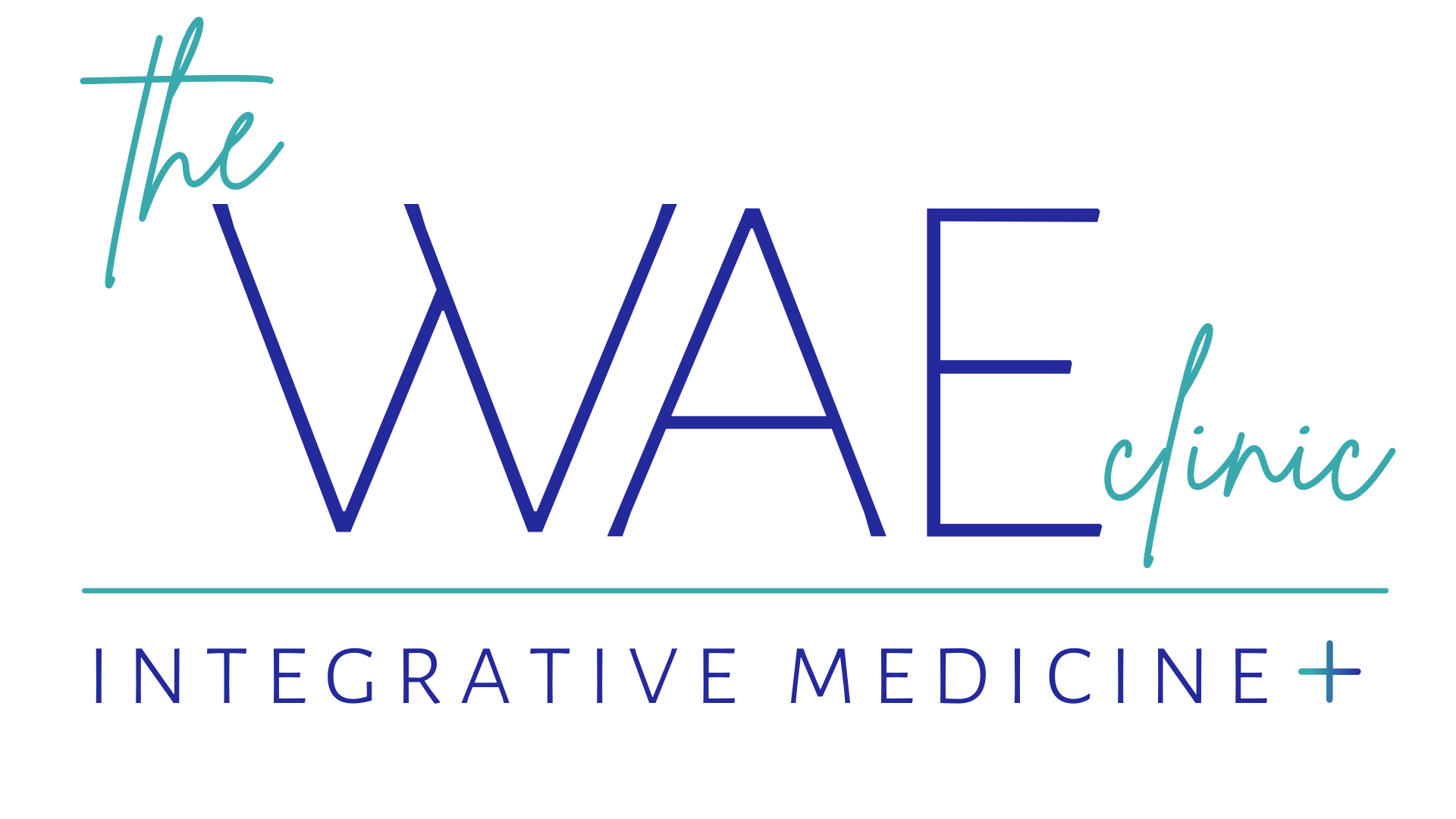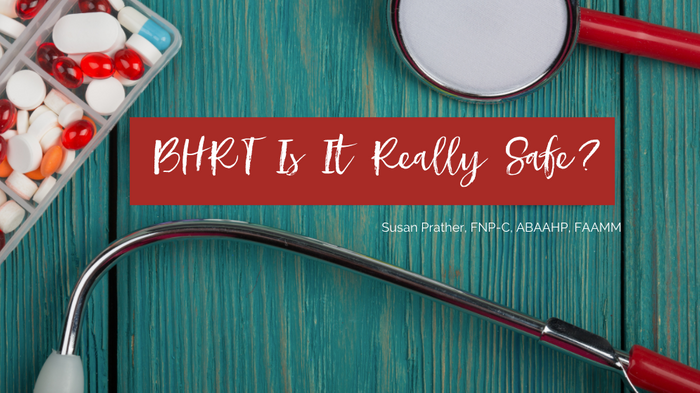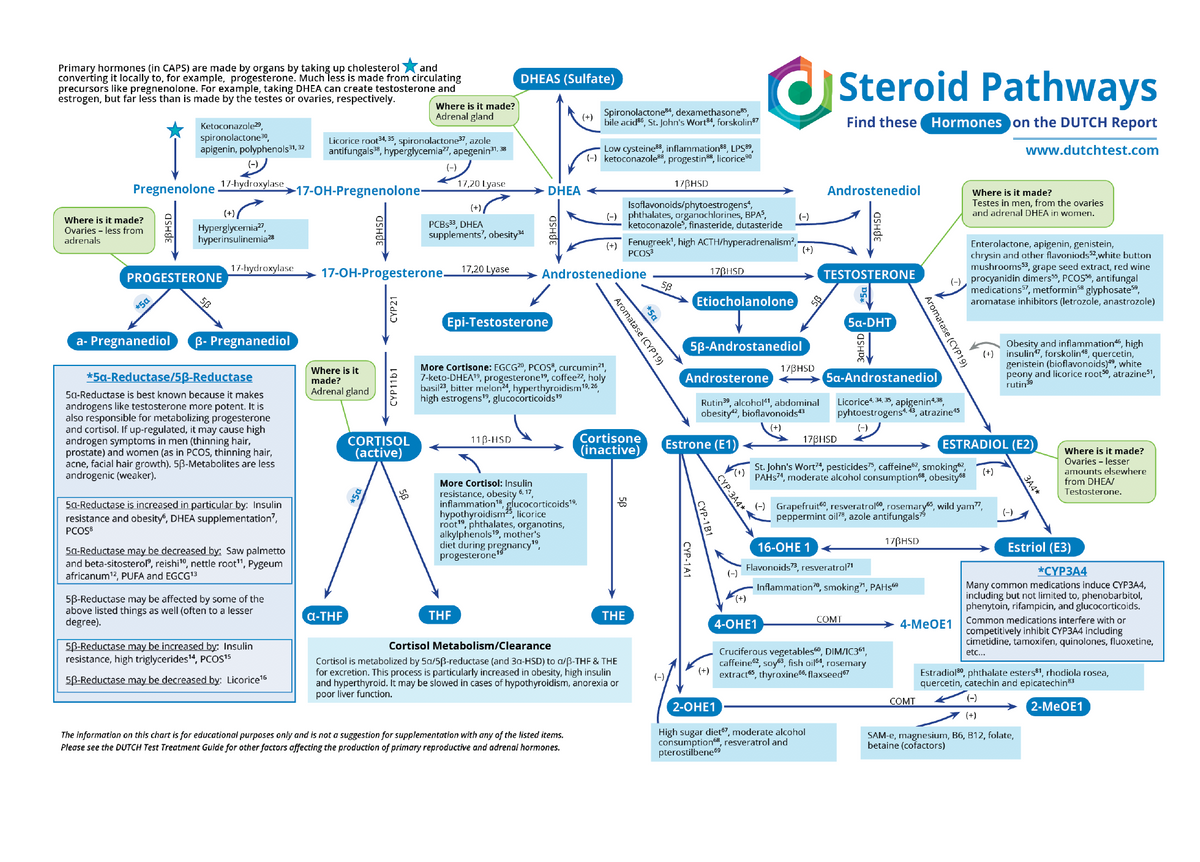Bioidentical hormones do not contain any additional structural substituents that can modify their binding and function. Instead, they are molecularly identical to endogenously produced hormones (Ruiz et al., 2011). These hormones include estrone (El), estradiol (E2), estriol (E3), progesterone (P4), and testosterone. Variations in the actions, risks, and advantages of hormones rely on several factors, including administration, absorption, bioavailability, metabolism, receptor affinity, the specificity of receptors, and molecular structure (Moskowitz, 2006). Bioidentical Hormone Replacement Therapy (BHRT) can be available commercially or be compounded, creating much controversy over the safety of BHRT preparations. State pharmacy boards govern the production of compounded BHRT (CBHRT). CBHRT is similar to manufactured drugs prescribed for off-label use, which constitutes around a fifth of all prescriptions (IACP, n.d). Commercially available, FDA approved BHRT preparations are different from CBHRT preparations in that they are closely regulated by the federal government, developed according to strict federal guidelines, and their outcomes are subject to medical scrutiny. The beneficial effects of various doses of FDA-approved estrogen products on vasomotor symptoms, hot flashes, bone density, urogenital atrophy, and fracture prevention have been reported in multiple peer-reviewed publications. However, CBHRT lacks the same level of evidence to date (Files, Ko, & Pruthi, 2011).
Estrogen, Progesterone, Progestins
Large-scale clinical trials conducted in Europe, have consistently proven BHRT effective in eliminating menopausal symptoms and shown a lack of long-term adverse side effects using BHRT. Bioidentical progesterone remains safer and more effective, and several studies have demonstrated that any estrogen (conjugated estrogen or bioidentical estradiol) paired with synthetic progestin doubles the risk of breast cancer. The Women's Health Initiative (WHI) study established that conjugated estrogen use elevated long-term risk of breast cancer, stroke, and myocardial infarction. Despite the concerns posed regarding the validity of the WHI study, there is still cause for caution. At best, the use of synthetic estrogen and progestin remains controversial. Synthetic progestins have untoward side effects such as thrombosis, breast tissue hyperplasia, and alterations in cardiovascular, cholesterol, carbohydrate, and lipid metabolism, which triggered additional investigation into bioidentical (micronized) progesterone as a safer alternative. Bioidentical estrogen and progesterone replacement therapy improves lipoprotein profiles as opposed to progestin therapy. The effects of treatment using conjugated estrogen and progestins, including the increased risks of breast cancer and cardiovascular events, have not been recorded with BHRT. Bioidentical progesterone has a consistently favorable impact on breast cell proliferation, as opposed to synthetic progestins. Estradiol and progesterone have decreased proliferative effects on cancer cell lines of the breast tissue as opposed to progestins and conjugated estrogens. (Schwartz & Holtorf, 2008)
Breast & Endometrial Cancer Risk
Higher estradiol levels in the serum are associated with an increased risk of breast cancer and endometrial cancer (Moskowitz, 2006). E1 and E2 are metabolized to form catechol estrogens [2-hydroxyE1(E2) and 4-hydroxyE1(E2)] and 16α-hydroxylation. The 4-hydroxyE1(E2) have greater carcinogenic influence than the 2-hydroxyE1(E2) (Cavalieri & Rogan, 2006). However, the effects of estrogen are mediated by two separate estrogen receptors: receptor-alpha (ER-α) and receptor-beta (ER-β). Estrogen receptor-α promotes the proliferation of breast cells; in contrast, ER-β inhibits proliferation and prevents breast cancer (Holtorf, 2009). Estrogen receptor α is present in the endometrium, breast cancer cells, and ovaries, while β is located in bone, kidney, lung, and endothelial cells (Files, Ko, & Pruthi, 2011). Estradiol (E2) stimulates ER-α and ER-β equally, while estrone (E1) stimulates ER-α primarily at a ratio of 5:1. In comparison, estriol (E3) binds ER-β selectively at a ratio of 3:1. This unique binding of estriol confers a potential for the prevention of breast cancer to estriol, while other estrogens would be predicted to promote breast cancer (Holtorf, 2009). A study by Zeng at al. (2018) showed that BHRT with estrogen-only therapy significantly decreased breast cancer risk. Studies suggest an inverse correlation between levels of estriol and breast cancer and reports antitumor effects of estriol (Moskowitz, 2006). Asi et al. (2016) reported that estrogen and progesterone use in menopausal women is correlated with a decreased risk of breast cancer as opposed to synthetic progestin.
Progesterone is associated with greater effectiveness, patient satisfaction, and quality of life compared with progestins. The effect of progesterone on both the endometrium and breast tissue is antiproliferative and antiestrogenic. Alternatively, synthetic progestin has antiproliferative, antiestrogenic effects on endometrial tissue, while its estrogenic effect on the breast tissue is proliferative. Therefore, progesterone reduces the risk of breast cancer, while progestins increase the risk (Holtorf, 2009). Women with progesterone deficiency are 5.4 times more likely than women with normal progesterone levels to have premenopausal breast cancer (Cowan et al., 1981). Low-dose transdermal estradiol patches and gels may promote endometrial proliferation, so progesterone should be used to prevent endometrial hyperplasia if the patient has her uterus. Compounded transdermal progesterone does not efficiently inhibit endometrial hyperplasia (Sites, 2008).
Cardiovascular Risk
In cardiovascular disease, the beneficial lipid and vascular impact of estrogen are negated by synthetic progestins as compared to progesterone (Holtorf, 2009). Clotting risk increases with estrogen replacement therapy. High-dose estrogens, primarily synthetic and oral estrogens, increase the synthesis of coagulation factors. Transdermal progesterone, in contrast with progestins, shows no increase in markers for inflammation or clotting. Oral estrogens increase angiotensin, which can elevate blood pressure and risk of stroke. Estriol, however, does not affect hemostasis (Moskowitz, 2006). Progesterone preserves and enhances the cardioprotective impact of estrogen and thus reduces the risk of heart attack and stroke. Compared with the use of conjugated equine estrogens and synthetic progestins, transdermal bioidentical estrogen and progesterone are correlated with favorable cardiovascular and metabolic effects (Holtorf, 2009).
Estrogen and Progesterone Replacement
When hormones are not replaced after menopause there is an increase in bone loss, breast cancer risk, and cardiovascular risk. Women who initiate estrogen therapy soon after menopause gain global cardiovascular benefit. Estradiol replacement reduces coronary heart disease (CHD) mortality rates, regardless of the age of initiation, with earlier initiation showing greater risk reduction. However, oral estrogens have an increased risk of venous thromboembolism, an effect that is avoided with topical administration (L’Hermite, 2017). For women who are within 10 years of menopause, under age 60, and have no contraindications, the benefit of treating vasomotor symptoms and preventing bone loss with HRT outweighs the risks. However, for women over 60 or those who initiate HRT more than ten years from menopause onset, the greater absolute risks of coronary heart disease, stroke, venous thromboembolism, and dementia outweigh the benefits of synthetic hormone replacement (Pinkerton et al., 2017). In a study by Ruiz et al. (2011), women receiving compounded BHRT saw significant reductions in mood symptoms, including emotional liability, irritability, anxiety, as well as reductions in night sweats and hot flashes. Women using CBHRT versus FDA approved BHRT showed fewer side effects to therapy (Vigesaa, 2004). Several studies indicate that supplementation of estrogen, progesterone, and testosterone improves bone maintenance (Moskowitz, 2006). Progesterone decreases blood pressure in hypertensive patients, as well as alleviates water retention. Progesterone has many positive effects on the brain and nervous system, including promoting the development of myelin, activating GABA receptors, decreasing brain ischemia, and reducing the inflammatory response following traumatic brain injury. Estrogens have beneficial effects on the brain, including increased blood flow, and serotonin and norepinephrine stimulation, which may influence mood and the function of the nerve cells. (Moskowitz, 2006). Estradiol skin patches provide consistent, low doses of estradiol, reducing hot flashes and vaginal dryness. In menopause, oral progesterone enhances sleep quality (Sites, 2008).
Testosterone
Benefits of Testosterone
Low testosterone levels are associated with central obesity and accumulation of intraabdominal fat, while men with higher testosterone levels have a 42% lower risk of Type II Diabetes. Treatment with testosterone results in improved body mass index (BMI), weight, waist circumference (WC), and inflammatory markers in the serum (Khera et al., 2016). Epidemiological studies have recorded the consequences of untreated androgen deficiency connecting low testosterone levels with higher all-cause mortality, in particular cardiovascular disease mortality (Bhasin et al., 2010).
Risks with Testosterone Replacement
Metastatic breast and prostate cancers are hormone-dependent, and testosterone treatment may stimulate cancer growth. Poor outcomes with testosterone replacement are associated with unevaluated prostate nodules, prostate-specific antigen (PSA) levels greater than 4 ng/ml, hematocrit greater than 50 percent, severe lower urinary tract symptoms related to benign prostatic hypertrophy, and uncontrolled congestive heart failure. Typical adverse effects in healthy individuals are acne, breast tenderness, elevated hematocrit, and suppressed spermatogenesis. Uncommon adverse effects include breast enlargement, hair loss, skin irritation, alterations in taste, mood swings, worsened sleep apnea, and breast or prostate cancer progression (Bhasin et al., 2010).
Prostate Cancer
Current evidence does not support claims that testosterone replacement increases the risk of prostate cancer. The association between androgen levels and prostate cancer have not been identified. There is some supportive evidence to reflect testosterone replacement is safe after prostate cancer treatment and may be protective against reoccurrence. (Khera et al., 2016)
Cardiovascular Risk
The Vigen study pointed out several potential mechanisms by which cardiovascular risk may be increased by testosterone replacement. First intramuscular testosterone increases platelet aggregation and platelet thromboxane A2 receptor density. Second, dihydrotestosterone magnifies monocyte activation in the endothelium, which promotes atherosclerosis. Third, testosterone use in severe obstructive sleep apnea worsens sleep-disordered breathing, increasing the risk of atherosclerosis. However, this study was limited in several ways. It was an observational study lending itself to bias. The timing of the testosterone measurements was unclear. Different hospitals performed the measurements. The study evaluated ICD-10 codes rather than chart reviews to assess outcomes. The study was small, with extended follow up times, and the subjects were undergoing angiography (Vigen et al., 2013). A direct relationship between testosterone replacement-induced erythrocytosis and the resulting risk of cardiovascular events has not been identified through prospective randomized controlled trials, even with the hypothesis that increased blood viscosity confers risk for ischemic sequelae, including stroke and deep vein thrombosis. Several meta-analyses reveal no increased risk of cardiovascular disease (CVD), and in men with metabolic disorders, testosterone therapy was cardioprotective. Low testosterone levels are associated with an increased risk of CVD. However, if mortality from CVD is increased in men with low testosterone levels is unclear (Khera et al., 2016).
Testosterone Replacement
The existing recommendations conclude that the diagnosis of hypogonadism comprises a combination of testosterone deficiency symptoms and low testosterone concentrations. Several epidemiological findings from the USA, Australia, and Europe have established 350 ng/dl as the lowest level in healthy people for testosterone serum levels (Dimopoulou et al., 2016). Testosterone levels begin to decline after age 20 by 0.3% to 1.4% per year. The normal range of testosterone is typically based on morning levels and can vary between laboratories. In younger men, late afternoon testosterone levels can be 20-50% lower than morning levels. This large variation is uncommon with older men. Total testosterone levels less than 150 ng/dl should prompt further investigation with a prolactin level for pituitary evaluation (Khera et al., 2016). Some typical laboratory lower limits of normal are 280–300 ng/dl for total testosterone and 5–9 pg/ml for free testosterone in healthy young men. However, total testosterone levels under 300 ng/dl are associated with decreased libido. The recommendation for testosterone replacement in younger men is achieving total testosterone levels in the lower part of the normal range of young men 400–500 ng/dl. In men receiving intramuscular testosterone, the recommended optimal range of total testosterone is 400-700 ng/dl one week after injection. The Endocrine Society guidelines recommend against testosterone replacement in older men with low testosterone levels. They, however, allow for treating symptomatic older men with total testosterone levels at or below 200-300 ng/dl (Bhasin et al., 2010).
Conclusion
The medical literature supports the claim that bioidentical hormones have some uniquely different physiological effects than their synthetic counterparts. Concerning the risk of breast cancer, heart disease, heart attack, and stroke, extensive medical evidence indicates that bioidentical hormones are safer and more effective forms of HRT than synthetic formulations (Holtorf, 2009). Presently, several small studies have evaluated the effectiveness of BHRT, and findings indicate that bioidentical hormones are safe and effective for symptoms like hot flashes, night sweats, mood swings, irritability, and anxiety. BHRT poses less potential for adverse effects on breast, bone, cardiovascular, and brain associated health outcomes than synthetic hormones (Conaway, 2011).
References
Asi, N., Mohammed, K., Haydour, Q., Gionfriddo, M. R., Vargas, O. L. M., Prokop, L. J., Faubion, S. S., & Murad, M. H. (2016). Progesterone vs. synthetic progestins and the risk of breast cancer: A systematic review and meta-analysis. Systematic Reviews, 5(1), 1–8. https://doi.org/10.1186/s13643-016-0294-5
Bhasin, S., Cunningham, G. R., Hayes, F. J., Matsumoto, A. M., Snyder, P. J., Swerdloff, R. S., & Montori, V. M. (2010). Testosterone therapy in men with androgen deficiency syndromes: An endocrine society clinical practice guideline. Journal of Clinical Endocrinology and Metabolism, 95(6), 2536–2559. https://doi.org/10.1210/jc.2009-2354
Cavalieri, E., & Rogan, E. (2006). Catechol quinones of estrogens in the initiation of breast, prostate, and other human cancers: Keynote lecture. Annals of the New York Academy of Sciences, 1089, 286–301. https://doi.org/10.1196/annals.1386.042
Conaway, E. (2011). Bioidentical hormones: An evidence-based review for primary care providers. Journal of the American Osteopathic Association, 111(3), 153–164. https://doi.org/10.7556/jaoa.2011.111.3.153
Cowan, L. D., Gordis, L., Tonascia, J. A., & Jones, G. S. (1981). Breast cancer incidence in women with a history of progesterone deficiency. American Journal of Epidemiology, 114(2), 209–217. https://doi.org/10.1093/oxfordjournals.aje.a113184
Dimopoulou, C., Ceausu, I., Depypere, H., Lambrinoudaki, I., Mueck, A., Pérez-López, F. R., Rees, M., Van Der Schouw, Y. T., Senturk, L. M., Simonsini, T., Stevenson, J. C., Stute, P., & Goulis, D. G. (2016). EMAS position statement: Testosterone replacement therapy in the aging male. Maturitas, 84, 94–99. https://doi.org/10.1016/j.maturitas.2015.11.003
Files, J. A., Ko, M. G., & Pruthi, S. (2011). Bioidentical hormone therapy: Concise review for clinicians. Mayo Clinic Proceedings, 86(7), 673–680. https://doi.org/10.4065/mcp.2010.0714
Holtorf, K. (2009). The bioidentical hormone debate: Are bioidentical safer or more efficacious than commonly used synthetic versions in hormone replacement therapy? Postgraduate Medicine, 121(1). https://doi.org/10.3810/pgm.2009.01.1949
International Academy of Compounding Pharmacists (IACP). (n.d.). The Truth About Bioidentical Hormones.
Khera, M., Broderick, G. A., Carson, C. C., Dobs, A. S., Faraday, M. M., Goldstein, I., Hakim, L. S., Hellstrom, W. J. G., Kacker, R., Köhler, T. S., Mills, J. N., Miner, M., Sadeghi-Nejad, H., Seftel, A. D., Sharlip, I. D., Winters, S. J., & Burnett, A. L. (2016). Adult-onset hypogonadism. Mayo Clinic Proceedings, 91(7), 908–926. https://doi.org/10.1016/j.mayocp.2016.04.022
L’Hermite, M. (2017). Bioidentical menopausal hormone therapy: registered hormones (non-oral estradiol ± progesterone) are optimal. Climacteric, 20(4), 331–338. https://doi.org/10.1080/13697137.2017.1291607
Moskowitz, D. (2006). A comprehensive review of the safety and efficacy of bioidentical hormones for the management of menopause and related health risks. Alternative Medicine Review, 11(3), 208–223.
Pinkerton, J. A. V., Aguirre, F. S., Blake, J., Cosman, F., Hodis, H., Hoffstetter, S., Kaunitz, A. M., Kingsberg, S. A., Maki, P. M., Manson, J. A. E., Marchbanks, P., McClung, M. R., Nachtigall, L. E., Nelson, L. M., Pace, D. T., Reid, R. L., Sarrel, P. M., Shifren, J. L., Stuenkel, C. A., & Utian, W. H. (2017). The 2017 hormone therapy position statement of the North American Menopause Society. Menopause, 24(7), 728–753. https://doi.org/10.1097/GME.0000000000000921
Rosenthal, A., Jacoby, T., Israilevich, R., & Moy, R. (2020). The role of bioidentical hormone replacement therapy in anti-aging medicine: a review of the literature. International Journal of Dermatology, 59(1), 23–29. https://doi.org/10.1111/ijd.14684
Ruiz, A. D., Daniels, K. R., Barner, J. C., Carson, J. J., & Frei, C. R. (2011). Effectiveness of compounded bioidentical hormone replacement therapy: An observational cohort study. BMC Women’s Health, 11. https://doi.org/10.1186/1472-6874-11-27
Sites, C. K. (2008). Bioidentical hormones for menopausal therapy. Women’s Health, 4(2), 163–171. https://doi.org/10.2217/17455057.4.2.163
Vigesaa, K. A., Downhour, N. P., Chui, M. A., Cappellini, L., Musil, J. D., & McCallian, D. J. (2004). Efficacy and tolerability of compounded bioidentical hormone replacement therapy. International Journal of Pharmaceutical Compounding, 8(4), 313–319. http://www.ncbi.nlm.nih.gov/pubmed/23924704
Schwartz, E. T., & Holtorf, K. (2008). Hormones in wellness and disease prevention: Common practices, current state of the evidence, and questions for the future. Primary Care Clinics in Office Practice, 35(4), 669–705. https://doi.org/10.1016/j.pop.2008.07.015
Vigen, R., O’Donnell, C. I., Barón, A. E., Grunwald, G. K., Maddox, T. M., Bradley, S. M., Barqawi, A., Woning, G., Wierman, M. E., Plomondon, M. E., Rumsfeld, J. S., & Ho, P. M. (2013). Association of testosterone therapy with mortality, myocardial infarction, and stroke in men with low testosterone levels. Journal of the American Medical Association, 310(17), 1829–1836. https://doi.org/10.1001/jama.2013.280386
Zeng, Z., Jiang, X., Li, X., Wells, A., Luo, Y., & Neapolitan, R. (2018). Conjugated equine estrogen and medroxyprogesterone acetate are associated with decreased risk of breast cancer relative to bioidentical hormone therapy and controls. PLoS ONE, 13(5), 1–12. https://doi.org/10.1371/journal.pone.0197064
*These statements are not meant to diagnose or treat. You should consult your health care provider before starting any new diet, exercise, or supplement.


